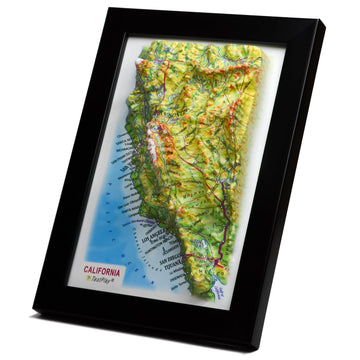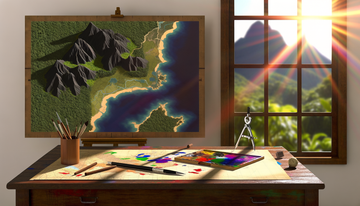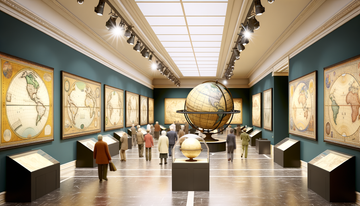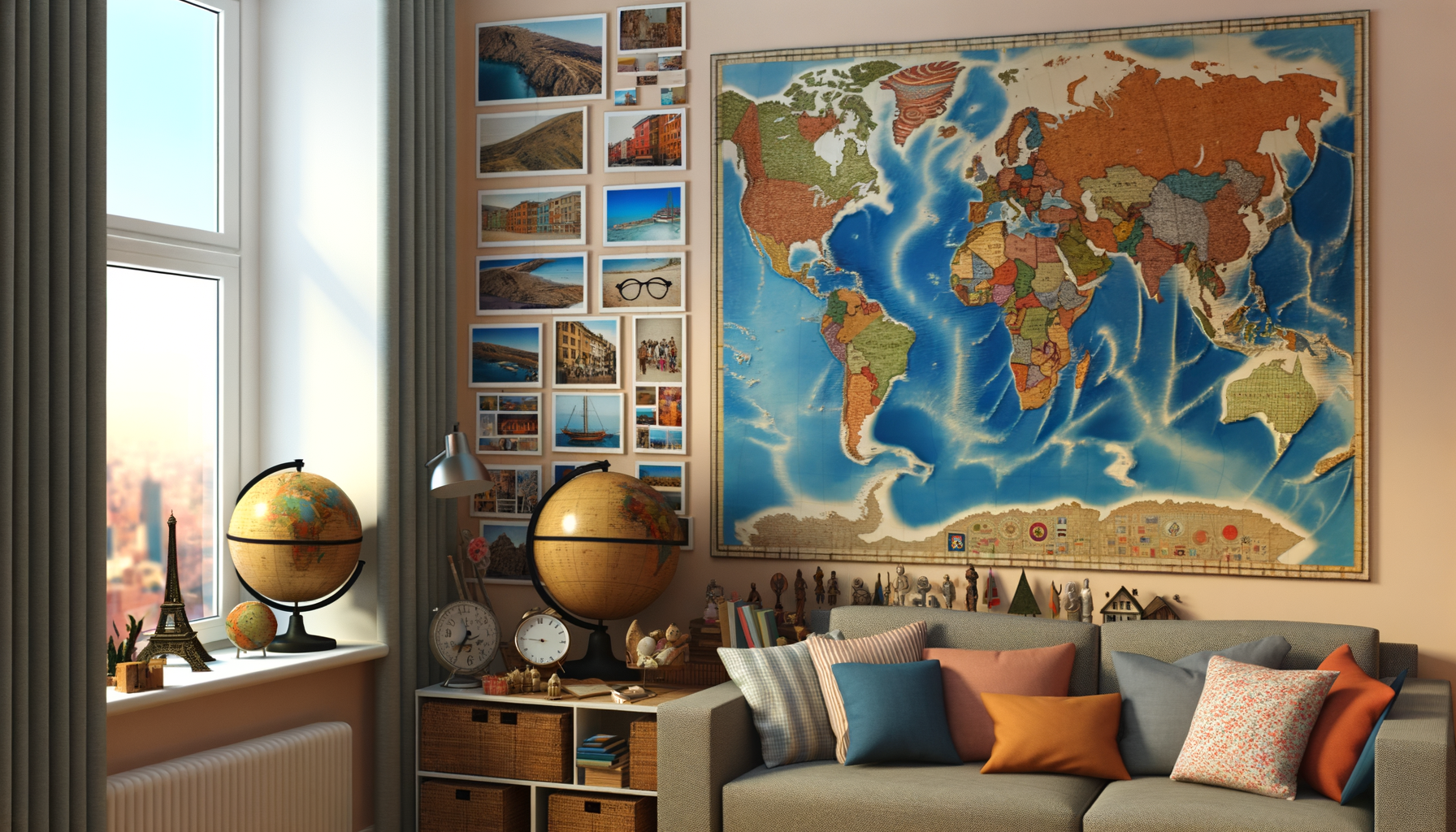Building Your Wanderlust Haven: Expert Tips for Selecting Maps and Globes for Your Travel Wall
Imagine a space in your home that instantly transports you across continents and oceans, a visual story of adventures past and dreams yet to unfold. This is the magic of a travel wall, a curated display of your wanderlust, creativity, and personal history.
In the first part of our guide to creating a travel wall, we explored the 'why' – the deep connection between travel, memory, and creating a space that inspires further exploration. Now, we delve into the very heart of many iconic travel walls: the maps and globes that serve as both decorative elements and powerful symbols of exploration.
Selecting the right maps and globes is a crucial step in building a truly stunning and meaningful travel wall. It goes beyond simply picking items off a shelf; it involves thoughtful consideration of style, scale, type, and how each piece will contribute to the overall narrative of your wall. This post will guide you through the exciting process of choosing these foundational pieces, ensuring they not only look fantastic but also resonate with your personal travel journey and aesthetic.
The Foundation: Choosing Your Maps
Maps are arguably the most fundamental element of a travel-inspired wall. They offer a flat representation of the world, or specific parts of it, inviting viewers to trace routes, pinpoint beloved locations, and learn about geography. The variety available is vast, allowing for immense personalization in your selection process.
Types of Maps to Consider
The world of maps for decor extends far beyond the standard classroom variety. Understanding the different types available will help you choose pieces that best fit your vision and the story you want to tell on your wall. Each type offers a unique aesthetic and potential function within your display.
Traditional world maps are a classic choice and come in countless styles, from politically focused versions showing country borders to physically oriented maps highlighting topography. These provide a comprehensive overview and can serve as a central anchor piece for your collection. The color schemes can range from vibrant and modern to muted and vintage-inspired.
Regional and continental maps allow you to focus on areas of particular interest to you, perhaps places you have traveled extensively or regions you dream of exploring. Displaying a map of Europe, Asia, or even a specific state or province can add a layer of detail and personal connection to your wall. They work well interspersed with a larger world map or grouped to highlight specific areas.
City maps offer intricate detail and can evoke powerful memories of specific urban adventures. Vintage city maps often have beautiful cartography and historical details, while modern ones can highlight current street layouts and landmarks. These are excellent for adding smaller, highly personal touches to your wall display.
Vintage maps carry a sense of history and timeless appeal. Their aged paper, classic fonts, and sometimes outdated political boundaries tell a story of a different era. These maps can add significant character and a touch of antique elegance to your travel wall, often serving as beautiful focal points due to their unique aesthetic.
Modern and artistic maps offer contemporary designs, abstract interpretations, or unique data visualizations of geographical information. These can introduce bold colors, minimalist styles, or unexpected artistic flair to your wall, blending geography with modern art sensibilities. They are perfect for adding a fresh, contemporary feel to your travel decor.
Interactive maps, such as push pin maps or scratch-off maps, invite ongoing engagement with your display. Push pin maps allow you to mark places you've visited or wish to visit, visually documenting your personal travel journey over time. Scratch-off maps reveal colorful layers beneath as you uncover destinations, turning your wall into a dynamic record of your adventures. These types add an interactive element that evolves as you travel more.
Considering Scale, Style, and Harmony
As you explore the different types of maps, it is essential to think about the overall scale and style you want to achieve for your travel wall. Will you feature one massive statement map, or create a gallery wall with many smaller pieces? The size of your chosen maps should be proportionate to the size of the wall and the other elements you plan to include.
The style of your maps should ideally harmonize with each other and with the existing decor in your room. Do you prefer a cohesive look with maps from the same era or cartographer, or a more eclectic, layered appearance with diverse styles? Mixing vintage, modern, and artistic maps can create a rich, visually interesting narrative, but it requires thoughtful curation to avoid looking chaotic.
Consider the color palette of the maps themselves and how they will interact with your wall color and room furnishings. Muted, sepia-toned vintage maps evoke a sense of nostalgia, while bright, colorful modern maps can bring energy and vibrancy to the space. Thinking about how the colors will complement each other and the room is key to creating a harmonious display.
Where to Find Your Perfect Maps
Finding the right maps can be part of the adventure itself. Specialty map stores, both physical and online, offer a wide selection of current and historical maps, often with options for different sizes, finishes, and framing. These are excellent resources for finding specific types of maps or high-quality reproductions.
Antique shops, vintage markets, and estate sales are treasure troves for unique, aged maps with character and history. You might stumble upon a beautiful, slightly worn school map or a framed cartographic print from decades past. Be prepared to search and potentially restore items found in these locations.
Online retailers and marketplaces offer unparalleled variety, from mass-produced decorative maps to rare, collectible pieces. Websites specializing in home decor, art prints, and antique paper goods are good places to start. Remember to carefully check descriptions and seller reviews when purchasing online, especially for vintage items.
Museum gift shops and historical societies sometimes sell reproductions of significant historical maps or unique cartographic art. Consider artists who specialize in map-inspired artwork or prints; they can offer truly original pieces that blend geography with artistic expression. Don't forget to explore prints on different materials like canvas or metal for varied texture and durability.
Adding Dimension: Selecting Globes
While maps provide a flat perspective, globes offer a three-dimensional representation of the Earth, adding depth, form, and a sense of physicality to your travel wall display. They serve as both educational tools and striking decorative objects. Integrating globes requires considering their size, type, and how they will complement the maps and other elements on your wall or nearby surfaces.
Exploring Globe Varieties
Globes come in numerous forms, each offering a distinct style and presence. Desktop globes are perhaps the most common, designed to sit on a table, shelf, or pedestal. They are versatile in size and can be easily moved and arranged.
Floor-standing globes, often mounted on wooden or metal stands, make a grand statement and can serve as a significant piece of furniture in the room near the wall. Their size and presence demand attention and anchor the travel theme in the physical space. These are ideal if you have a larger wall or want a prominent focal point away from the wall itself, acting as an extension of the display.
Illuminated globes contain internal lighting, making the countries or physical features visible even in low light. When lit, they cast a warm glow and highlight cartographic details in a captivating way. These add a functional and aesthetic element, especially effective in evening settings.
Vintage globes, like vintage maps, possess charm and historical interest. Their color schemes, fonts, and depiction of political boundaries from past eras offer a tangible link to history. The patina of age on the sphere or base can add character and authenticity to your collection.
Modern globes feature contemporary designs, materials, and often updated political geography. Some are minimalist, focusing purely on form, while others might incorporate interactive features or unique artistic interpretations. These are perfect for adding a sleek, current feel to your display.
Beyond traditional political or physical globes, you can find celestial globes depicting stars and constellations, or even historical globes showing ancient maps. These less common types can add a unique layer of interest and conversation to your travel-themed space, broadening the scope of exploration beyond just the Earth.
Size, Material, and Era Considerations
The size of the globes you choose should be proportionate to your maps and the overall scale of your wall display. A single large floor globe might flank a large map, while several smaller desktop globes can be artfully arranged on shelves integrated into or near the map wall. Mixing globe sizes can add visual interest and depth.
Consider the materials of the globe's base and meridian (the ring around the sphere). These often dictate the style – a wooden base suggests tradition, polished metal implies modernity, while aged brass or iron enhances a vintage feel. The material of the globe sphere itself is usually paper or plastic, but the finish and printing quality vary significantly.
Decide if you want your globes to match the era or style of your maps, or if you prefer a deliberate contrast. A vintage globe next to a modern scratch-off map creates an interesting juxtaposition of old and new ways of experiencing the world. Consistency in style can create a more formal, curated look, while variety lends itself to a more eclectic, personal feel.
Sourcing Unique Globes
Globes can be found in many of the same places as maps. Antique stores and vintage shops are excellent for finding unique, aged globes with character. Look for details like the style of the stand, the political boundaries shown, or any signs of wear that tell a story.
Specialty decor stores and furniture retailers often carry a selection of decorative globes in various sizes and contemporary styles. Online marketplaces offer a vast array, from inexpensive decorative items to rare antique collectibles. When buying vintage or antique globes online, pay close attention to condition descriptions and ask for additional photos if needed.
Estate sales and auctions can sometimes yield beautiful and unique globes, potentially at lower prices than retail. Educational supply stores might offer accurate, up-to-date physical or political globes, which are great for accuracy if that is a priority. Remember that finding the perfect globe might take time, so enjoy the search!
Harmonizing Your Collection: Integrating Maps and Globes
Once you have started selecting maps and globes, the next exciting step is thinking about how they will live together harmoniously on your wall and within your space. This involves planning the layout, considering how different styles interact, and assessing the physical space available. Thoughtful integration ensures that your collection tells a cohesive visual story.
Planning Your Layout
Before putting nails in the wall, plan your layout. A helpful technique is to create paper templates of your maps and cutouts representing the approximate space needed for globes on shelves or pedestals. Arrange these templates on the wall using painter's tape, allowing you to experiment with different configurations without commitment.
Consider having a focal point – perhaps a large world map or a prominent floor globe – and arrange other pieces around it. Think about balance: distribute sizes, shapes, and colors evenly across the display. Avoid overcrowding; leave some breathing room around each piece to allow it to stand out and prevent the wall from feeling cluttered.
Layout can be formal and symmetrical, or more casual and organic. A grid layout with maps of the same size offers a clean, modern look, while a more freeform arrangement with mixed sizes and shapes creates an eclectic gallery wall effect. Integrate shelves or floating ledges into your plan to accommodate globes among the flat maps.
Mixing and Matching Styles
Don't be afraid to mix different styles and eras of maps and globes. The contrast between a detailed, politically accurate modern map and a decorative, slightly whimsical vintage globe can be visually compelling. Combining different textures, like a framed paper map, a canvas print map, and a wooden-based globe, adds tactile interest.
The key to successful mixing and matching is finding common threads or creating deliberate contrasts that work together. Perhaps a consistent color palette ties diverse pieces together, or a shared theme, like focusing on a specific continent, provides cohesion. Trust your eye and arrange pieces in a way that feels personally appealing and tells your unique story.
Layering is another technique to consider, especially with items placed on shelves in front of maps. A smaller globe or stack of travel books placed on a shelf in front of a large map adds depth and visual interest. Ensure that crucial parts of the map are not permanently obscured, but temporary layering can create a dynamic look.
Considering Your Space
The size and shape of the wall you are using will dictate the possibilities for your layout. A long, narrow wall might suit a horizontal arrangement of multiple maps, while a tall, narrow wall could accommodate a vertical stack or a large format map. Consider architectural features like windows, doors, or corners that might impact the display area.
Think about the existing furniture in the room and how the travel wall will interact with it. Will globes sit on existing bookshelves or side tables, or will you need to add specific shelving? Ensure there is clear space around the wall area for viewing and appreciating the display without feeling cramped.
The lighting in the room is also important. Will natural light hit the wall? Avoid placing delicate or vintage maps in direct sunlight, which can cause fading and damage over time. Consider adding picture lights or adjustable spotlights to highlight specific pieces and make the display visible at night.
Making it Personal: Adding Other Travel Elements
While maps and globes form the core of many travel walls, incorporating other personal travel memorabilia can enhance the narrative and make the display even more meaningful. These additional elements provide glimpses into specific journeys and add layers of memory and emotion. This section offers brief ideas on integrating other travel-related items alongside your maps and globes, transforming the display into a truly personal museum of your travels.
Consider adding framed travel photographs, postcards, or even printed boarding passes and ticket stubs. These visual mementos connect the abstract geography of the maps and globes to concrete, personal experiences. Displaying a photo next to the city map where it was taken creates a direct link between place and memory.
Small souvenirs or artifacts from your travels can be placed on shelves among the globes or mounted on the wall if lightweight. Think about items like small statues, unique rocks or shells (handled with care regarding legality), or local crafts. Ensure these items are securely displayed and do not pose a risk of falling or damaging other pieces.
Collections of foreign currency, travel journals, or even empty perfume bottles of scents worn on specific trips can be incorporated. These elements add texture and a deeper level of personal history to the wall. Use shadow boxes, display cases, or integrated shelving to showcase these smaller, precious items safely and attractively.
Ensuring Longevity: Care and Maintenance
Your travel wall is an investment in decor and memory, so taking steps to care for your maps and globes will ensure they remain beautiful for years to come. Proper handling and maintenance are especially important for vintage or antique pieces, which can be fragile. This ensures your collection continues to inspire you and future generations.
Protect maps from direct sunlight, which can cause ink to fade and paper to become brittle. Use UV-protective glass if framing valuable maps, or choose a wall location that does not receive harsh, direct sun exposure. Maintaining stable temperature and humidity levels in the room can also help preserve paper maps and the materials used in globes.
Regularly dust your globes and framed maps using a soft, dry cloth or a gentle brush. For globes, be careful around the seams where the paper gores meet, as these can become fragile with age. Avoid using harsh chemical cleaners, especially on vintage items, as they can damage finishes and materials.
For push pin maps, periodically check that pins are securely in place, especially if the wall is in a high-traffic area. If you have vintage globes with moving parts or stands, handle them gently and avoid forcing anything that feels stiff. If you have particularly valuable or antique pieces, research specific care recommendations for their materials and age.




